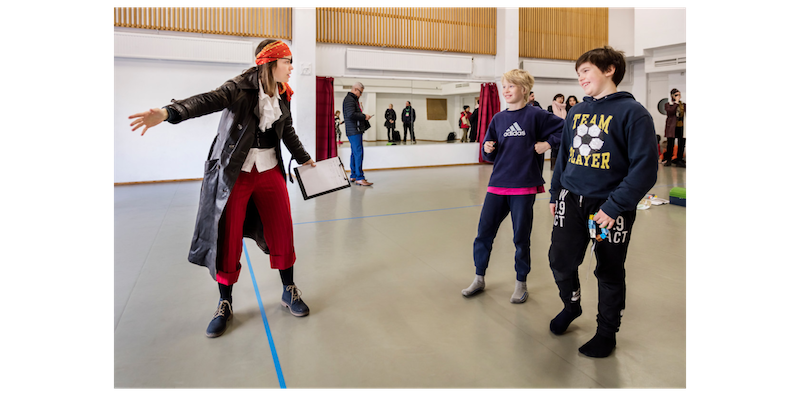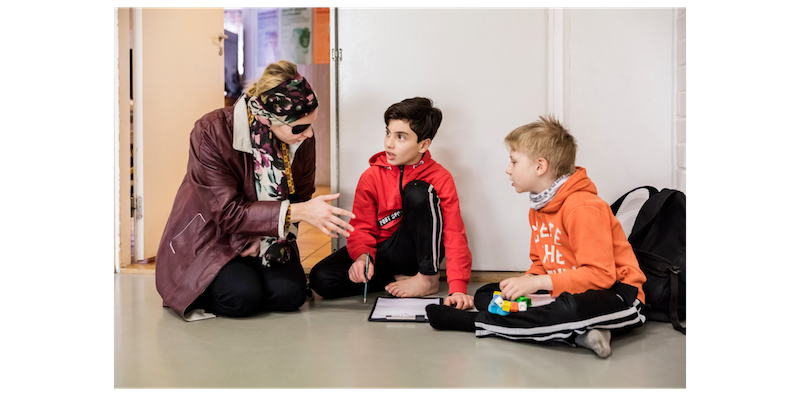How Helsinki implements and supports smart learning environments
Finland is often cited as an inspirational model for improving school systems. But how does this happen? Here, the City of Helsinki’s Education Division offers us an insight by explaining how and why they started to implement smart (hybrid) learning environments to enable a wide range of pedagogies, support the inclusion of learners and enhance equality.
But first, a few background notes about Finland’s education system for our readers, from Wikipedia.
- Schools up to the university level are almost exclusively funded and administered by the municipalities of Finland (local government).
- There are few private schools. When founded, private schools are given a state grant comparable to that given to a municipal school of the same size. However, the use of tuition fees is strictly prohibited, and selective admission is prohibited. Because of this, existing private schools are mostly faith-based or Steiner schools, which are comprehensive by definition.
- Teachers, who are fully unionized, follow state curriculum guidelines but are accorded a great deal of autonomy as to methods of instruction and are even allowed to choose their own textbooks.
- Classes are small, seldom more than twenty pupils.
- rom the outset pupils are expected to learn two languages in addition to the language of the school (usually Finnish or Swedish).
- Inside the school, the atmosphere is relaxed and informal, and the buildings are so clean that students often wear socks and no shoes.
- Outdoor activities are stressed, even in the coldest weather.
- Homework is minimal to leave room for extra-curricular activities.
- Reading for pleasure is actively encouraged (Finland publishes more children’s books than any other country). Television stations show foreign programs in the original languages with subtitles, so that in Finland children even read while watching TV.
- During the first years of comprehensive school, grading may be limited to verbal assessments rather than formal grades. The start of numerical grading is decided locally. There are no high-stakes tests.
- Comprehensive school students enjoy a number of social entitlements, such as school health care and a free lunch every day, which covers about a third of the daily nutritional need.
A text by Liisa Pohjolainen, executive director of the City of Helsinki’s Education Division
Our surrounding world has become more and more complex and the pace of change is increasing. The role of education is to respond to this accelerating change and to teach learners the skills they need to function in this world and do well in society.
Perceptions of learning are also evolving at the same time. One common way of learning may not be for everyone anymore, although certain methods of learning are certainly still valid. However, compared to the past, the amount of information that is easily available to everyone has exploded. The teacher is no longer the only source of information who transfers the wisdom forward to the students, but rather the coach that helps the learners to first find the reliable information needed and then to use it properly.
This shift has introduced smart learning environments which diminishes a time and place-based approach and embraces the idea that learning is happening all the time and everywhere around us. At the same time, students’ individual ways of learning are emphasised all the time, and thus personal paths of learning are formed.
“The idea of a smart learning environment is to create a forum where technology assists the learning process; it is not there to make things harder or make you lose your focus, but to enhance the learning experience.”
– Karri Mehtälä, ICT-Project Manager, Helsinki Education Division.
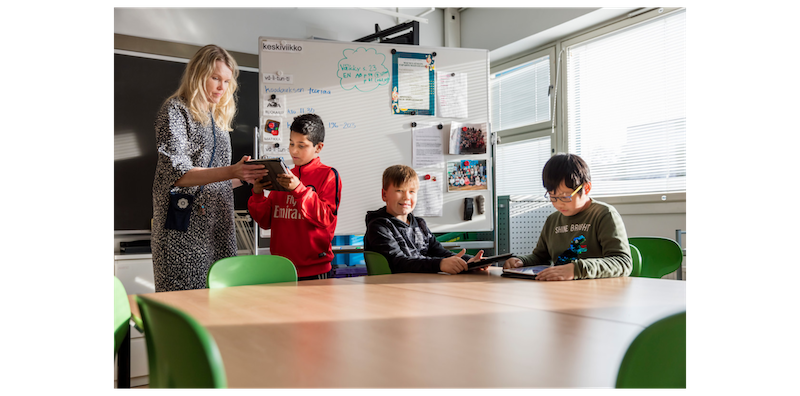
New learning environments, new learning opportunities
Smart learning environments are enabling teachers to plan and implement much more versatile learning modules than before. It is also very important for learners to be able to set their own goals in learning and to be able to monitor their progress towards those goals. It is also very important to get feedback of your progress from teachers and through peer evaluation. With the help of digital tools parents have become much more aware of the progress of their own child. These new technologies including digital portfolios, learning management systems and interactive digital materials and tools makes this enhanced learner, teacher and parent engagement easier to achieve.
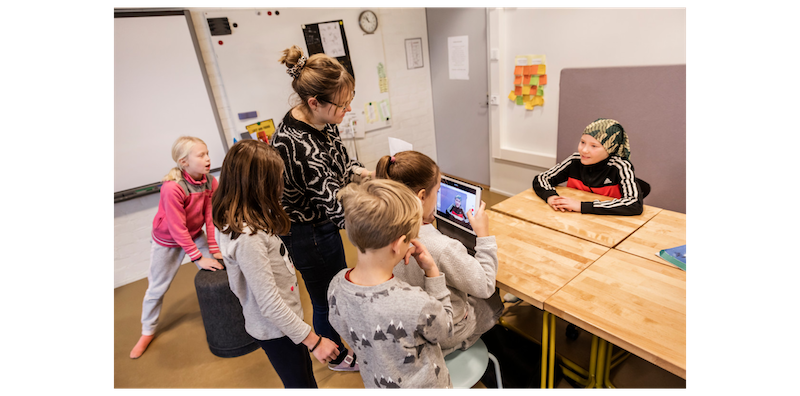
The digitalisation of the surrounding society has profoundly transformed our daily operating environment over the last ten years. Technology and digitalisation have contributed to this development by providing many new options and opportunities also for teaching and for teachers and learners. On the other hand, the supply of hardware, software, applications and platforms for teachers and learners to use seems endless and finding the suitable pedagogical tools to support teaching and learning can be tricky. To find the most useful solutions from the array of alternatives requires careful, pedagogical planning because the learner’s interest is paramount, and this must be kept in mind at all times. The emphasis is on tools, not toys.
From hearing needs to providing tools

In Helsinki, this planning and evaluation of new and already existing technology and its use is done together with teachers and experts of the Education Division. The conversation is open, and everyone can bring their own ideas to the table. It is crucial to have this dialogue occurring in conjunction with all of our pedagogies throughout the year and our Education Division has to have sensitive ears, so the needs of the education community will be heard. When something interesting is found to meet a specific need, Helsinki´s experts make a pedagogical study of the subject, the Information and communications technology department will make the security checks and if these conditions are met, we might have a new tool to use free for the teachers. We of course have our own infrastructure to inform teachers about new things and to train them to use new technologies via tutorials and lessons. “Personal training” can also be ordered for certain school or they can be held together with few schools of area or citywide. The City of Helsinki is also co-developing ed-tech together with startups and other commercial operators with certain kinds of procedures.
A wide pedagogical freedom for Finnish teachers
In Helsinki, and Finland more broadly, teachers have a wide pedagogical freedom to plan and implement their own teaching, and of course this is done in deep collaboration with colleagues. The curriculum sets content and objectives for a certain age level, but as stated, the pedagogical implementation style is very flexible. This is made possible by the high level of education, in-service training and, hence, professionalism of our teachers. This same pedagogical freedom is also reflected in the tools teachers use in smart learning environments. Both the teachers and learners have the access to plenty of technology, both free and licensed digital material, and various physical and virtual learning facilities that can support their learning.
Portfolio learning plays an important role in the pedagogy used in Helsinki. There are several platforms to choose from when the educators are deciding where to start building the digital portfolios together with the learners. They can of course start using them all if this is preferred, but usually it is good to start with one. In short, Helsinki is providing the pedagogically checked and secure tools and each educator is free to use the suites that meet the pedagogical needs best.
Small steps starting early in children’s “educational career”
When children start “their educational career” in early childhood education and care, they very soon become familiar with smart learning environments. The steps are small at first, naturally, but there is a path to follow and, over the years, the child becomes more and more aware of the kinds of digital tools suitable for one´s age to enhance learning, and of course the concept of portfolio is introduced. There are also several new ‘smart’ ways to promote creativity and make it visible for children themselves, peers and of course parents and teachers. These new ways can be, for example, movie or music productions exploiting new digital tools such as green screen-techniques or composing music. With virtual reality and augmented reality applications, learners can be transported to distant places and environments or eras that would otherwise be inaccessible (such as rainforests, lunar surfaces, the bottom of the sea or the Middle Ages). Augmented reality tools are used to enable pupils to plan their school yards because an immersive space makes it possible to bring targets and learning environments, which would otherwise be inaccessible, close to learners.
Technology enables individual methods of learning and new ways of collaborating.
This path leads towards the comprehensive school and allows working in smart environments to continue. As the student grows up, the individual way to study becomes more and more important as does finding their own strengths and the skills to be developed. Technology enables individual methods of learning and new ways of collaborating. The students are able to more effectively monitor their own learning and comparing the achievements to goals they have set for themselves, not comparing to classmates. The pedagogically minded use of technology offers the opportunity to diversify and expand learning while at the same time providing a more equitable opportunity for learners to be in active role in the surrounding society. The City of Helsinki offers learners equal opportunities to use smart technology in a pedagogically appropriate manner.
Lifelong learning: a “city” theme in Helsinki!
The learner continues to learn and work with all kinds of smart environments throughout their learning path, which from the perspective of lifelong learning, continues throughout their lives. Students take on more responsibility of their learning and eventually, they are the owners of their own learning. At any point, if needed, the learner has access to one´s own data and it can be taken out and taken with the learner to the next education level.
Taking this theory of the power of smart hybrid learning environments on board, a couple of semesters ago, learning revolved around a “city” theme in Helsinki, which included a variety of activities.
Urban design and media literacy for preschoolers
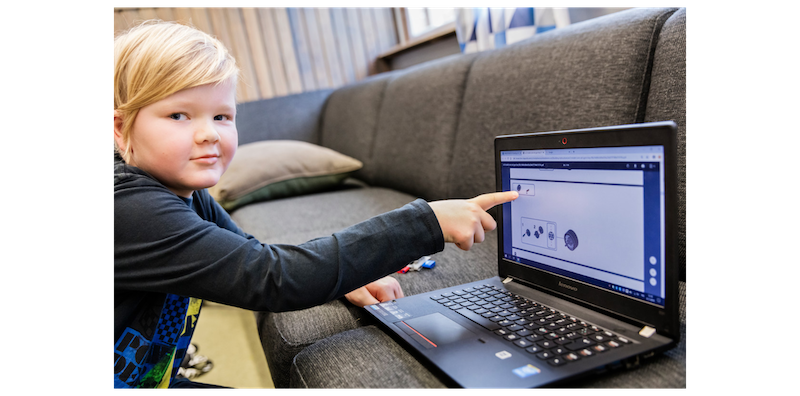
The largest single project in a daycare centre in Katajanokka involved building a city of their own. The learners first learned about urban planning and zoning. Each child designed their own building, creating it out of recycled materials. The buildings were made into a city that was painted and included roads, parking areas, parks, a river, a bridge and even a graveyard.
Manipulated photos had appeared in a newspaper in which Star Wars characters had taken over Helsinki, and the Death Star was hovering over Helsinki Cathedral. The young Star Wars experts wondered whether the images and videos were real and concluded that no such pictures could exist unless the events they depicted had really happened. This raised a genuine need to practice media literacy and talk about pictures in the media, resulting in the idea that we could practice image and video processing by using the city we had built. We decided to make images in which the children were in the city and an animation in which a bus drives along the city streets. We started by taking photos, with a tablet, of the city from different angles, from close by and at a distance. The children were photographed against a single-colour background. Once the child’s image had been separated from the background, an application was used to superimpose it on a photo taken of the city. The children decided which part of the city they wanted to be in. For some, it was important to be close to their own house, others wanted to walk in the middle of the street now that it was OK to do so, while some children had an adventure in the graveyard or were peeking from behind houses. They also created an animation in which a bus we had built drove around the city, picking up the children, after which all the children disembarked and the bus left the city.
When students create a neighborhood game
One comprehensive school approached the theme “City of Helsinki” via a game, which uses spatial information of their personal smartphones. The students designed almost fifty different exercises located in their neighborhood. The content of these exercises considered history, culture, sports, mathematics, physical exercises, you name it! The exercises were on video, audio or text-format and they opened only in certain locations. Hundreds of players participated this “neighborhood game” during that week, and because the game was open 24/7, the children also played the game with their parents and relatives after school.
Learning through authentic phenomena
Helsinki wants to make the learner’s role more active than previously: in this way, you can emphasise a learner’s ownership of their learning. To achieve this target, it is crucial to learn through authentic phenomena. Because the Helsinki Regional Transport Authority offers free transport to basic education groups and their teachers during school hours, no costs are involved in travelling to the sources of authentic phenomena. Digital applications, devices and platforms made all of this possible as did the close relationship between schools and the Education Division of the City of Helsinki.



